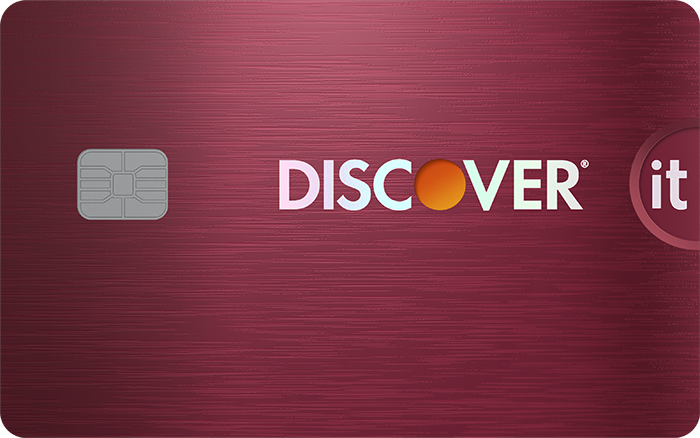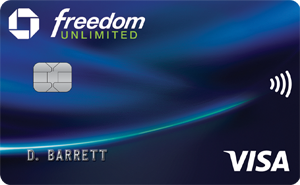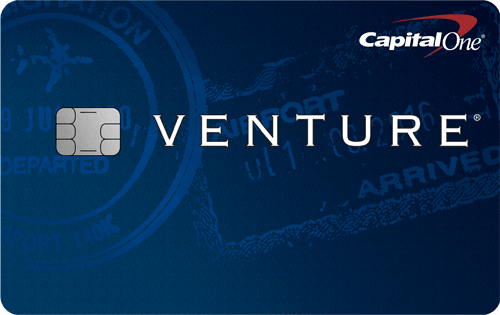The three biggest consumer national credit bureaus -- Experian, TransUnion, and Equifax -- don't calculate your credit score from thin air. To do that, each credit bureau needs data. And one source of that data is your creditors.
If you're a Capital One credit card holder, you might be wondering when this creditor sends your data to the credit reporting agencies. (Also, note that Capital One reports regularly to all three bureaus.)
To understand when Capital One reports credit utilization to the bureaus, we'll:
- Discuss what the issuer reports
- Look at the hows, whens, and whys of issuer reporting
- Explore what's important about your payment history and your credit utilization -- and what you can do to improve them
How often Capital One reports to credit bureaus
According to Capital One, it typically provides your credit information to all three bureaus every 30 to 45 days.
The company doesn't specify exactly when it does this, but it's normal for creditors to report your data at the end of every billing cycle.
Capital One also doesn't specify what exactly it reports, but based on a review of the information that shows up on a credit report, you can reasonably guess that Capital One reports:
- Your payment history for two years
- Your balance
- Your highest balance
- The amount of your last payment
- The past amount due
- The type of account
- The account status (open, closed, charged off, and so on)
- The date the account was open
- Who is responsible for the account
Other information may be reported, depending on your individual circumstances. Also, Capital One says that your credit report will show when the issuer provided your data to each bureau.
One key piece of data is your balance. With this information, plus your credit limit, a credit bureau can determine your utilization ratio. More on this all-important ratio in a moment.
Credit card comparison
We recommend comparing options to ensure the card you're selecting is the best fit for you. To make your search easier, here's a short list of standout credit cards.
| Offer | Our Rating | Welcome Offer | Rewards Program | APR | Learn More |
|---|---|---|---|---|---|
|
Rating image, 5.00 out of 5 stars.
5.00/5
Our ratings are based on a 5 star scale.
5 stars equals Best.
4 stars equals Excellent.
3 stars equals Good.
2 stars equals Fair.
1 star equals Poor.
We want your money to work harder for you. Which is why our ratings are biased toward offers that deliver versatility while cutting out-of-pocket costs.
|
Discover will match all the cash back you've earned at the end of your first year. N/A | 1% - 5% Cashback Earn 5% cash back on everyday purchases at different places you shop each quarter like grocery stores, restaurants, gas stations, and more, up to the quarterly maximum when you activate. Plus, earn unlimited 1% cash back on all other purchases—automatically. |
Intro: Purchases: 0%, 15 months Balance Transfers: 0%, 15 months Regular: 18.24% - 28.24% Variable APR |
||
|
Rating image, 5.00 out of 5 stars.
5.00/5
Our ratings are based on a 5 star scale.
5 stars equals Best.
4 stars equals Excellent.
3 stars equals Good.
2 stars equals Fair.
1 star equals Poor.
We want your money to work harder for you. Which is why our ratings are biased toward offers that deliver versatility while cutting out-of-pocket costs.
|
Up to $300 cash back Earn an extra 1.5% on everything you buy (on up to $20,000 spent in the first year) — worth up to $300 cash back. That's 6.5% on travel purchased through Chase Travel℠, 4.5% on dining and drugstores, and 3% on all other purchases. | 1.5% - 5% cash back Enjoy 5% cash back on travel purchased through Chase Travel℠, our premier rewards program that lets you redeem rewards for cash back, travel, gift cards and more; 3% cash back on drugstore purchases and dining at restaurants, including takeout and eligible delivery service, and 1.5% on all other purchases |
Intro: 0% Intro APR on Purchases and Balance Transfers for 15 months Purchases: 0% Intro APR on Purchases, 15 months Balance Transfers: 0% Intro APR on Balance Transfers, 15 months Regular: 20.49% - 29.24% Variable |
Apply Now for Chase Freedom Unlimited®
On Chase's Secure Website. |
|
|
Rating image, 5.00 out of 5 stars.
5.00/5
Our ratings are based on a 5 star scale.
5 stars equals Best.
4 stars equals Excellent.
3 stars equals Good.
2 stars equals Fair.
1 star equals Poor.
We want your money to work harder for you. Which is why our ratings are biased toward offers that deliver versatility while cutting out-of-pocket costs.
|
75,000 Miles 75,000 Miles once you spend $4,000 on purchases within 3 months from account opening | 2X-5X miles Earn unlimited 2X miles on every purchase, every day. Earn 5X miles on hotels and rental cars booked through Capital One Travel, where you'll get Capital One's best prices on thousands of trip options. |
Intro: Purchases: N/A Balance Transfers: N/A Regular: 19.99% - 29.99% (Variable) |
How often do issuers report to credit bureaus?
Broadly speaking, all issuers have a vested interest in keeping credit profiles current (because they benefit from having accurate, up-to-date data on consumers). So they tend to report on a regular basis. Capital One's reporting rate is not out of the ordinary.
This does not mean, however, that they always do so. There is no legal mandate to report cardholder activity, and there are issuers out there that don't bother. Additionally, some credit card issuers report to one bureau, or two, but not all three.
Creditors don't have to reveal when they report data, which credit reporting agencies they report to, or even whether they report in the first place. That said, most issuers aren't trying to be secretive about this. You can often get this information from a quick phone call to your issuer or brief message via their online chat service.
So at the end of the day, there is no single reporting standard. Different issuers report at different paces, and at different times.
Nevertheless there are numerous situations in which you might want to know this information, like when you're:
- About to apply for a job that requires a credit check
- Trying to get a mortgage
- Thinking about applying for a new credit card
In such instances, it's good to know when those reporting dates occur (if your issuer reports in the first place). Take a few moments to contact your issuer to learn these particulars, then try to pay off chunks of your debt in advance of the reporting date if you have the means. Reducing balances always makes your credit file look better. It should also help raise your score.
Why credit utilization is important
The reason lowering your balances can increase your FICO® Score (or VantageScore -- a competing credit scoring model) is that your credit utilization ratio has a big effect on your credit score. Utilization is your revolving debt balances compared to your credit limits, or the amount of your available credit currently being used. It's calculated for each card and overall.
Let's say, for example, that you have the following balances and limits on a portfolio of four cards:
| Credit Card | Balance | Credit Limit |
|---|---|---|
| Card 1 | $2,000 | $5,000 |
| Card 2 | $500 | $4,000 |
| Card 3 | $2,500 | $5,000 |
| Card 4 | $1,000 | $10,000 |
| Total | $6,000 | $24,000 |
In this case, your total utilization rate would be 25% -- $6,000 divided by $24,000. Your utilization on Card 3, however, is 50%. Your credit score will suffer if any one card is maxed out or nearly maxed out.
Credit utilization indicates how much room you have for more borrowing. People with the best credit scores tend to have a utilization ratio under 10%. Above that, you should expect to see your score diminish as your utilization goes up.
But you can have good credit with a utilization ratio of 30% or even more if other factors are strong.
To understand this better, here are the factors that affect your FICO® Score according to their weighting, most to least:
- Payment history: 35%
- Utilization ratio: 30%
- Length of credit history: 15%
- New credit accounts (i.e., credit instruments you've recently acquired): 10%
- Credit mix (the variety of your overall credit): 10%
Utilization is the second-most critical component of your credit score, next to payment history, and its weight is nearly equal.
How can I improve my credit utilization?
You can improve your credit utilization three ways:
- Reduce your debt
- Increase your credit limit
- Get a new credit card
Reduce your debt
It's best if you can somehow reduce your debt. Reducing debt will favorably tilt the ratio and also make your overall finances that much stronger. Plus, the newest FICO credit scoring model and VantageScore look favorably on decreasing debt.
Increase your credit limit
Raising your credit limit isn't a particularly daunting task. Although methods vary from issuer to issuer, a few clicks within your account management portal can usually lead you to a limit raise request. You can also typically ask for an increase via phone, or with a written request.
Oftentimes, your issuer will offer a credit increase in exchange for a small piece of information or two. It's common for issuers to bump the limit for cardholders that update their annual income figure, for instance.
It's also worth noting that your account needs to be in good standing to get a limit bump. Issuers won't increase their exposure to you as a lender if you haven't demonstrated you can pay your statements on time or be disciplined about your spending.
Get another credit card
To get approved for another card, you'll generally need to show consistent debt management, a good credit utilization ratio, and a timely, consistent payment history.
Keep in mind that applying for a new card will result in a hard inquiry on your credit report. In some cases, applying for a credit limit increase will do the same thing. So either way, apply sparingly. Each hard inquiry has the potential to reduce your credit score by a few points. Too many hard inquiries could make it hard for you to get credit in the future when you need to apply.
TIP
Check credit score requirements before applying for a credit card. Some credit cards only approve people with excellent credit. Others are made especially for people with low or no credit. Here are our favorite credit cards organized by credit score requirements:
- Below 580: Best cards for poor credit
- 580-669: Best cards for fair credit
- 670-739: Best cards for good credit
- 740 or higher: Best cards for excellent credit
Final thoughts
There are many ways to improve your credit utilization ratio. If you're worried about credit utilization on your Capital One cards, look into one of the methods above to improve your ratio.
If you're on this page, it means you're already taking the best first step toward a better credit score: education. Whether you're thinking of keeping your existing Capital One credit card and habits, asking for a credit limit increase, paying your bill off more frequently, or something else, you're ready to take the next steps toward financial wellness.
Still have questions?
Some other questions we've answered:
We're firm believers in the Golden Rule, which is why editorial opinions are ours alone and have not been previously reviewed, approved, or endorsed by included advertisers. The Ascent, a Motley Fool service, does not cover all offers on the market. The Ascent has a dedicated team of editors and analysts focused on personal finance, and they follow the same set of publishing standards and editorial integrity while maintaining professional separation from the analysts and editors on other Motley Fool brands.


